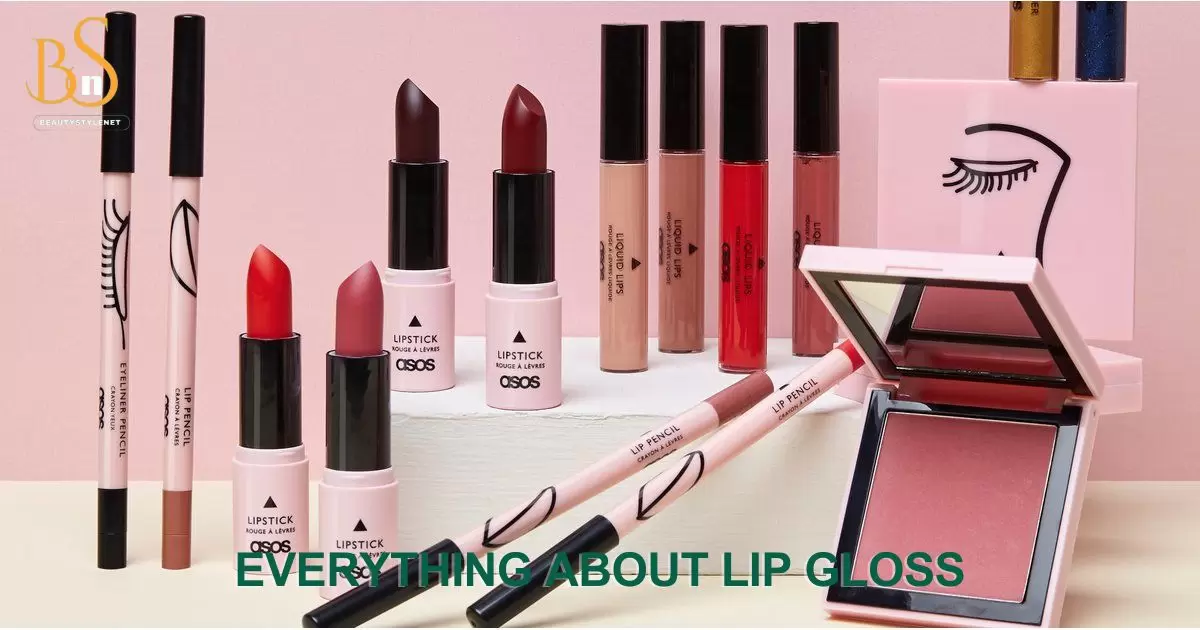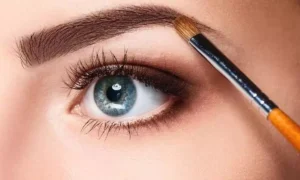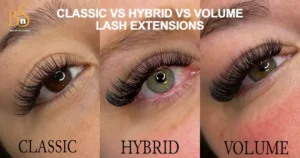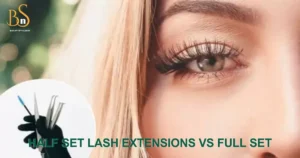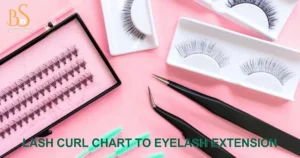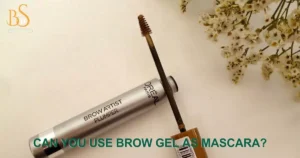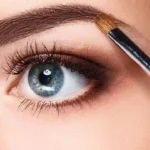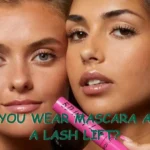Have you ever wondered what exactly lip gloss is and what gives it that shiny, glossy finish? We will explore everything you need to know about lip gloss, including what it’s made of, its purpose, different types of formulas, benefits, and more.
Whether you’re a lifelong lip gloss lover or just curious about the product, by the end you’ll have a comprehensive understanding of lip gloss and how it can enhance your natural lip color and texture.
What is Lip Gloss?
Lip gloss, also sometimes called lip shine or lip glaze, is a product used to add shine and color to the lips. It has a high-shine, low-pigment formula that gives lips a glossy look without much opacity or color coverage. It is thinner in consistency than lipstick and comes in either a tube or pot packaging for easy application directly onto the lips. If you are interested read about mascara.
What is Lip Gloss Made Of?
The main ingredients in lip gloss that give it its signature slick, moisturizing finish are oils and waxes. Common oils include coconut, jojoba, orange, and vitamin E oils which hydrate and condition lips. Waxes like beeswax create a glossy texture.
Lip gloss also contains film-forming polymers that lend a shine to the formula without being greasy. Pigments are used sparingly to enhance the natural color of lips without much coverage. Other ingredients can include flavorings, antioxidants, and preservatives.
The formulations vary based on the specific effects or benefits of each type of gloss. Some contain collagens, peptides, or other anti-aging ingredients to plump lips. Others focus on highly reflective or vibrant pigments for bold color payoff. No matter the formula, the key components are oils, waxes, polymers, and minimal pigments for a glossy, luminous look.
What is the Purpose of Lip Gloss?
While lip gloss can add a hint of translucent color, its main purpose is to give lips an instant shine and glow. The highly reflective and hydrating formula makes lips look naturally fuller and healthier.
It enhances the natural lip texture and color instead of fully covering it like lipstick would. It’s meant for a wash of shine rather than opaque pigment. Whether over bare lips or atop lipstick, the gloss gives a finished glossy look that brightens and defines the lip area.
Types of Lip Gloss
There are several main types of lip gloss formulas to choose from, each with their unique effects:
Colored Glosses
These glosses contain various pigments to add a sheer wash of color to lips in shades like pink, nude, red, and berry.
Clear Glosses
As the name suggests, clear glosses are transparent and colorless. They simply add shine without any pigment.
Iridescent Glosses
For an extra sparkly look, iridescent glosses contain subtle flecks of glitter or fine shimmer.
Plumping Glosses
Formulated with mild irritants like cinnamon, ginger, or peppermint oils, plumping glosses temporarily increase circulation in the lips for an illusion of fuller volume.
Treatment Glosses
Enhanced with ingredients like antioxidants, peptides, cocoa butter, and shea butter, treatment glosses nourish lips in addition to adding gloss.
Benefits and Features
In addition to their shine-enhancing properties, lip glosses offer other key benefits:
- Moisturization: Oils and hydration keep lips soft and supple.
- Protection: Occlusives form a protective barrier on lips from environmental damage.
- Customizable: Can be worn alone for subtle shine or layered over lipstick for an extra glossy finish.
- Portable: Lip gloss is much less messy to reapply than solid lipsticks. Potomac glosses are conveniently packaged in tubes for on-the-go touchups.
- Long-lasting: When applied properly, most glosses last through eating and drinking without needing constant reapplication like other lip products.
Do You Need to Wear Lip Gloss?
While lip gloss isn’t a lip product that provides full coverage like lipstick, it does serve the purpose of bringing instant luminosity to lips. For some, the sheer shine of gloss is all they need for a fresh-faced look.
Others prefer it for enhancing their everyday lip color or balm. Wearing lip gloss is a matter of personal preference it’s not a necessity, but when used right, it can boost lips’ natural texture and pigmentation.
What is the Difference Between Lipstick and Gloss?
The main differences between lipstick and lip gloss come down to formulation, texture, and wear:
- Formulation: Lipstick has a solid, highly pigmented formula that provides rich color in matte or satin finishes. The gloss has a liquid, low-pigment formula that’s much more sheer and translucent.
- Texture: Lipstick applies like a solid with more opacity. The gloss has a slippery, transparent liquid texture that melts onto the lips.
- Wear: Lipstick color lasts longer through meals since it doesn’t budge as easily as gloss. Gloss is moreHigh-shine but fades sooner than lipstick throughout the day.
- Finish: Lipstick finishes range from matte to satin to creamy. Gloss has a shiny, glossy look that adds luminosity versus real opacity.
- Coverage: Lipstick fully covers lips in a solid color. Gloss washes lips in a hint of light-to-medium coverage along with shine.
Is Lip Gloss Good for Your Lips?
When applied properly, lip gloss can benefit lips in several ways:
- Moisturizing Oils: Formulas rich in jojoba oil, grapeseed oil, and shea butter moisturize dry lips.
- Antioxidants: Some glosses contain vitamins C & E which protect lips from environmental damage.
- Hydration: Occlusives seal in hydration so lips don’t lose moisture throughout the day.
- Exfoliation: Regular gloss wear with scrubby textures like sugar can gently buff away dead flakes.
- Plumping Options: Formulas with mint, cinnamon, and gingerroot temporarily increase lip circulation.
As long as lips are first prepped and conditioned, gloss shouldn’t cause any adverse effects. Just be sure to remove it thoroughly before bed to avoid waking up with sticky residue. High-quality ingredients and not over-licking the gloss also help keep lips balanced. With the right formula, gloss can benefit lips when worn smartly.
Discover My Lip-Perfecting Lip Gloss Formulas
Here are some of my signature lip gloss formulas created with only the finest oils, waxes, and pigments to nourish lips with luscious color and shine:
Collagen Lip Gloss
This plumping gloss is packed with collagen and hyaluronic acid to smooth fine lines and add volume. Lips will look plump and youthful with just one swipe of this gloss available in both sheer and pigmented shades.
Jewel Lips
A sparkly burst of lip glitter in subtle multidimensional shades. Infused with moisturizing grapeseed oil and vitamin E, this gloss gives lips a high-impact crystalline shine whether worn alone or over lipstick.
Lip Lustre
Conditioning shea butter and jojoba oil hydrate lips while light-diffusing pearl pigments add a radiant, lit-from-within glow. Flattering nude tones flatter all complexions for a bespoke wash of color.
My Best Clear Lip Gloss
This clear best-seller adds nothing but shine, hydration, and smoothness to lips. Jojoba and hyaluronic acid replenish moisture as vitamin E guards against pollution. Slick on a layer for an instant healthy lip boost.
Final Thoughts
Lip gloss is a fun and versatile beauty product that allows you to customize your lip look depending on your desired effect – whether you want subtle shine, sparkle, or luminous color. While lipstick is the queen of opacity, gloss reigns when it comes to instant radiance and moisture.
The right formula can also benefit overall lip health with skin-smart ingredients like oils, antioxidants, and peptides. Whether applying gloss alone or layering it over other lip products, it’s easy to boost your natural lip color and texture within seconds.
Experiencing all the different types like plumping, treatment, and iridescent glosses is part of the pleasure of the gloss-wearing experience. And for touch-ups on the go, nothing beats the portability and ease of a lip gloss.

A seasoned beauty enthusiast, Rachel James has honed her craft in beauty style innovation over 7 years, blending artistry with precision to redefine beauty allure.
